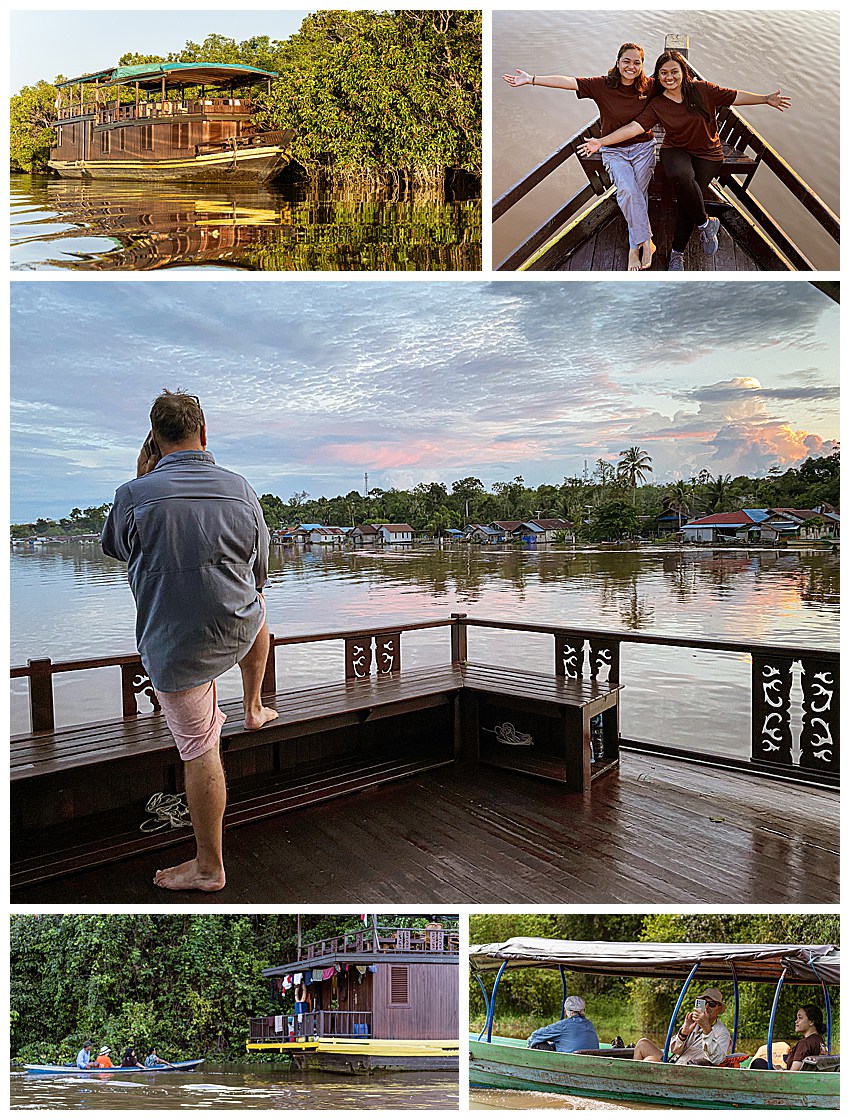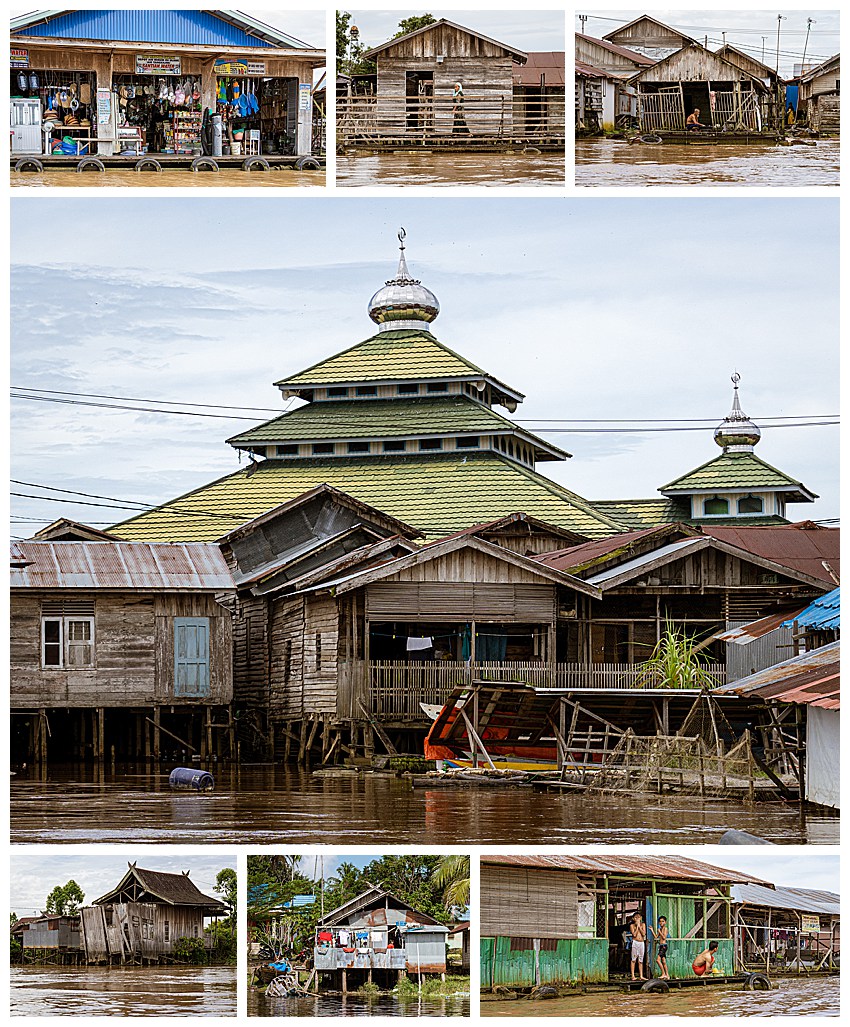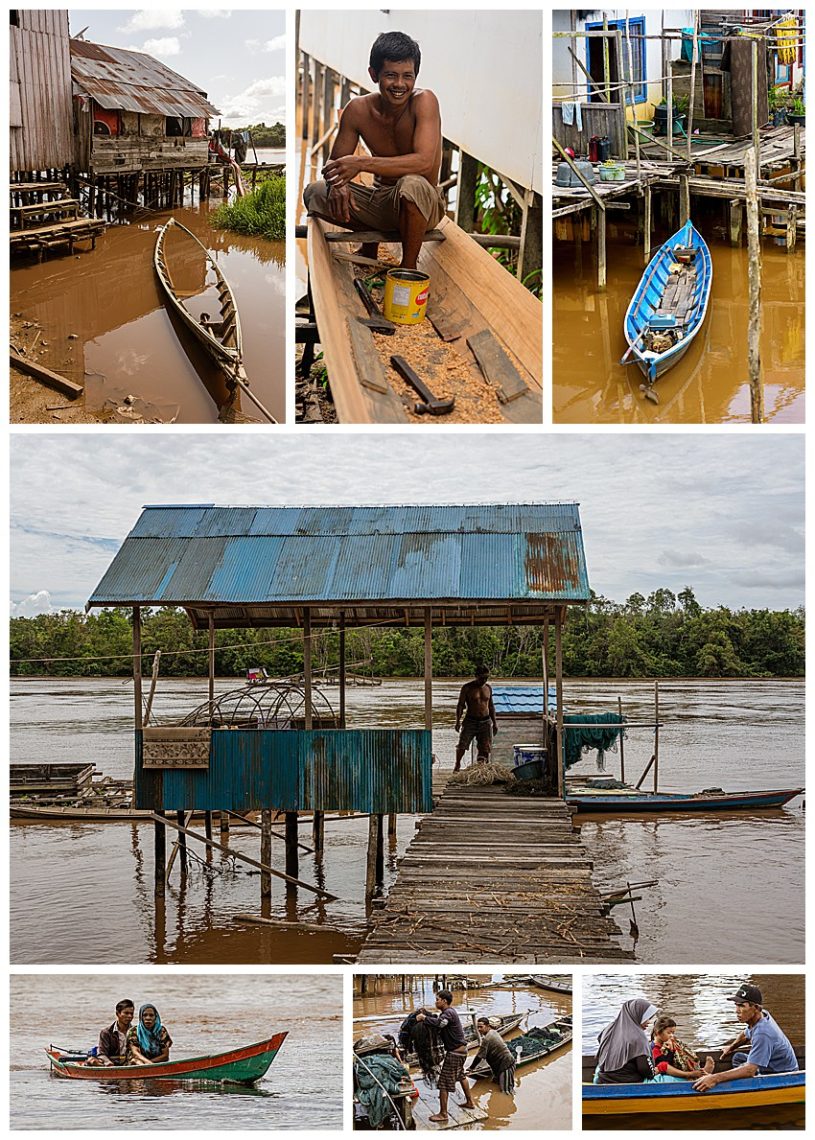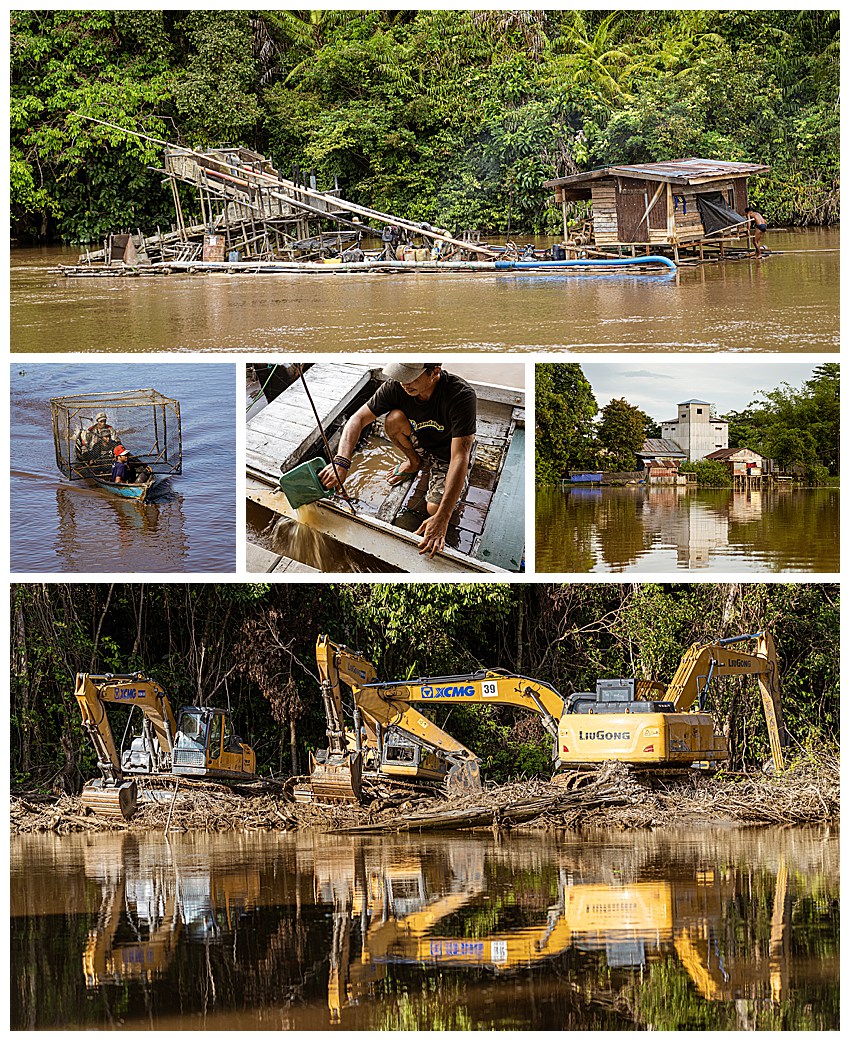
As part of our tour in Central Kalimantan, we spent three days on a houseboat floating down the forest lined rivers of Palangkaraya. While I was initially concerned that we might be bored on this portion of the trip, nothing could have turned out further from the truth!
Juli Kristalia, from Wow Borneo organized this portion of our travels for Dave Metcalf, and I want to particularly give her a massive Thumbs Up for her efforts and for our enjoyment of this portion of our travels.
You can see the houseboat we stayed on upper-left, and then lower-left as we approached it after one of our canoe excursions. Juli and her friend, Ery Stevani went to the bow to recreate a scene from the movie Titanic, but this image of them facing us was the better photo. Center image shows Dave (our photo guide, from David Metcalf Photography) looking over the bow at a typical beautiful sunset.

On one morning, prior to boarding the houseboat, we took a canoe down a river in Palangaraya, to see how the Dayak people of the area lived. The homes were mostly falling apart, and it was clear there has been essentially no maintenance since they were first built.
The center image shows the village mosque in the background, the largest and best maintained building in town.

Life revolves around the river for the indigenous people in the villages. While the top-center image shows a young man building a new canoe, others can be seen left to rot (upper left). The man in the center image is making new fish traps, used to gather the main food for the village, while the bottom-center image shows men offloading fishing nets for repair.

Commerce is all along the river. Left-middle image shows a powered canoe hauling a fish trap to a location where they will drop it overnight, retrieving it the next day for trapped fish. Middle-right shows the tallest building as a “birdhouse” or more accurately, bird’s nest factory. These have thousands of roosting slots for swiftlets, and speakers near the roof blasting out recordings of the swiftlets’ song 24/7 to attract the birds. After two years, the locals begin to harvest the nests for the ingredients for birds’ nest soup, which is sold in China. We were surprised to hear that they can only harvest every three months, and gain roughly $500 per building with each harvest. In some villages, there were dozens of birdhouses.
Some of the commerce is ecologically damaging though. The top image shows a typical gold mining machine, most of which are illegal. There are hundreds of these machines along the river, each dredging up the bottom, then processing it and dumping the sand in piles that obstruct navigation and water flow. When we talked to one of the operators, we asked how much he made per day. “Not per day,” he said. “Per week, we might recover 1 or 2 grams.” At the current price of $60 per gram, that is a lot of work with a lot of equipment and a team of 4 or 5 people for very little return.
The Indonesian government is also getting into growing more rice. There were multiple locations with large construction equipment, as seen on the bottom image. The government is using these to clear forests and swamps to create more rice fields to feed the rapidly growing population, where 56% of the population is under 25 years of age.

One afternoon, we took a short canoe ride off the houseboat to a “black lake,” filled with water soaked peat. The surface is mostly dead-still, producing mirror-like reflections.
